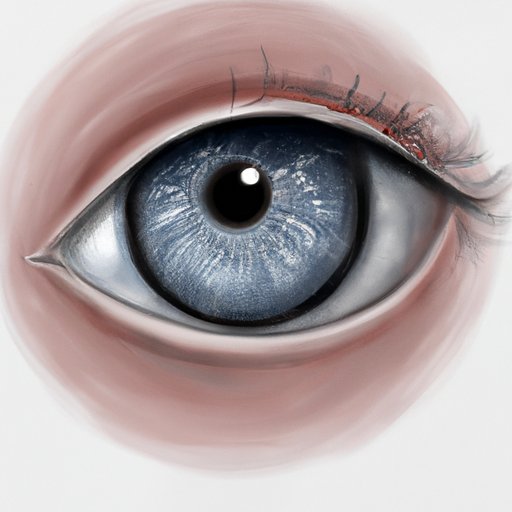Introduction
Drawing a realistic eye can be challenging, yet it is an essential skill for artists and illustrators who want to create lifelike portraits, landscapes, and still life art. A realistic eye drawing adds depth, emotion, and character to a piece. While mastering realistic eye drawing may look intimidating, it is achievable with practice and patience. This comprehensive guide will provide you with everything you need to know about drawing eyes and techniques from renowned artists that you can use to perfect your skills.
A Step-by-Step Guide to Drawing a Realistic Eye
Drawing a realistic eye involves several key steps. To begin, you need to sketch the basic shape of the eye. Draw a circle and then a smaller circle inside it to represent the iris. Next, add the pupil in the center of the iris. Then, draw the eyelid, and mark the upper and lower lashes. Finally, draw the surrounding skin.
To add depth to your eye drawing, add shading around the eyelid and under the eye. Start by identifying the key light source, then shade the areas that should have less light. Add more shadows under theiris and on the top of the eyelid. Use blending tools, such as a q-tip or blending stump, to smooth out your shading.
From Line to Life: How to Add Realism to Your Eye Drawings
Realistic eye drawings require more than just the right proportions and basic shading. You need to incorporate elements that add texture, depth, and dimension to your drawing. Understanding how to add highlights and shadows will help achieve the look of a 3D object. Use bold, white strokes on one side of the iris to show the light source coming in. A smaller, thin circle towards that side represents the reflection caused by that highlight.
Remember to also pay attention to small details like folds in the skin under the eye and the texture of the iris. The iris is not a flat surface, but rather a twisted structure with repetitive lines that create a unique pattern. You can also represent little variations such as shapes created by the blood vessels and uneven coloring or patterns in the iris.
The Anatomy of an Eye: Understanding the Components of a Realistic Eye Drawing
To create a realistic eye drawing, it is essential to understand the anatomy of the eye inside out. A human eye is approximately 1 inch in diameter and consists of several parts, including the sclera, iris, pupil, cornea, lens, and retina. These parts work together to allow the eye to see and react to light. When drawing an eye, take the time to study the structure of each part as it will make a big difference in the outcome of your piece.
Expert Eye Drawers Share Their Secrets: Tips and Tricks for Creating Realistic Eyes
There are numerous ways to draw a realistic eye, and every artist brings their own style and techniques to the process. This section includes tips and insights from renowned eye drawers that you can use to elevate your skills.
Medical illustrator and artist Mark Miller advises taking a look at real-life eyes and drawing them until you understand the significance of each detail. Local color can also make a significant difference, with lighter or thinner tissue appearing bluer and thicker tissue appearing redder or more orange in color.
Next, Sarah Jayne is a renowned artist who recommends using a variety of media to achieve a realistic eye. She often uses graphite pencils for life-like details and charcoal for smudging. Sarah also advises on experimenting with different eye shapes and colors to push beyond traditional blue and brown eyes.
Breaking the Rules to Make Your Eye Drawings More Realistic
While it is wise to master basic drawing techniques before attempting realistic drawings, don’t let it limit your creativity. Use the right amount of proportions and use your creativity by going beyond realistic colors and shapes. Remember, realism is not the same as accuracy as it allows you to exaggerate and enhance an object’s features and elements in a creative way beyond their mere representation.
Conclusion
Drawing a realistic eye is a challenging yet satisfying skill to master for any artist, whether amateur or professional. With the right techniques, expert tips, and a lot of practice, you can improve your eye drawing skills over time. Always strive to improve your skills by experimenting with different techniques, materials, colors, and above all, enjoy the process. With these insights, you’re now ready to take your drawing to the next level and create eye-catching art pieces.
